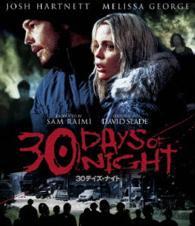- ホーム
- > 洋書
- > 英文書
- > Science / Mathematics
Full Description
FROM THE BESTSELLING AUTHOR OF PROFESSOR STEWART'S CABINET OF MATHEMATICAL CURIOSITIES
'Britain's most brilliant and prolific populariser of maths' ALEX BELLOS
What is the maximum land you can enclose inside a given border?
What is the minimum number of colours you can use to colour in a map so that no region shares a shade?
And how do you calculate the shortest route between two cities?
These questions may not sound related, but they have this in common: they all explore extremes: shortest lines, greatest areas, fewest colours. They have also given rise to some of the most important areas of mathematical study and have resulted in a myriad of applications - from the legend of Dido's founding of the city of Carthage to contemporary satellite navigation systems.
From soap bubbles to the cosmos, Britain's most beloved mathematician tells the fascinating stories of the people and ideas pushing the very bounds of mathematics - and the discoveries that have changed our lives.
-

- 電子書籍
- 美少女学園 眞辺あみ Part.40 …
-

- 電子書籍
- 藤田の生首 アクションコミックス






